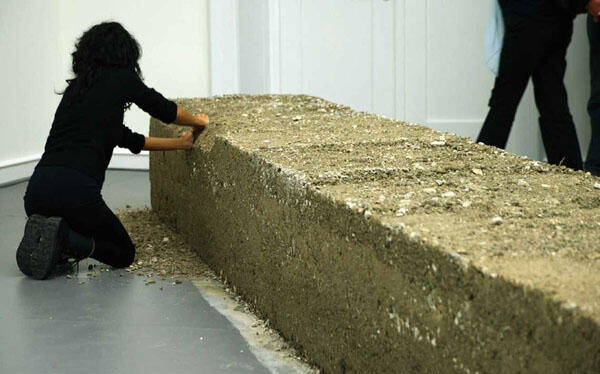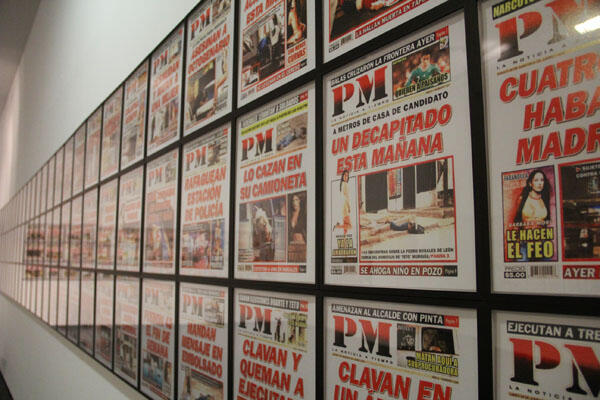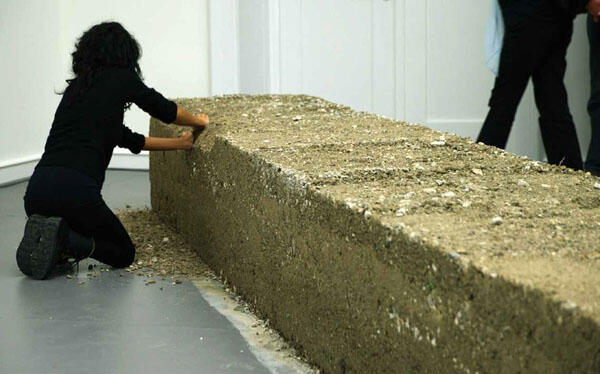Teresa Margolles
Centro de Arte Dos de Mayo, Móstoles
Reality as the unalterable context where actions take place and the way in which those same activities have an incidence on everyday life are the point of departure for the investigations that Teresa Margolles (Culiacán, Mexico, 1963) has been carrying out for years.

This bidirectional relational language, which has existence at one end and materiality at the other, and whose development contains the socio-economic concepts that determine an environment, offer a suitable field for the artist to carry out her inquiries into the violence that has such strong presence in Mexican society.
Margolles’s work has always included this documentary perspective that favors an interpretation of the time and place that are the subjects of her study. Focused on Ciudad Juárez, to which artists and writers have turned their eyes so many times on account of its tragic peculiarity, El testigo (The Witness) becomes a tour through successive spaces in the museum containing works that gradually delimit the political, social, and work context which Margolles investigates and which reveals the need to create new relationships with the aim of potentiating the rebirth of a society of change.
This itinerary begins with PM 2010, 2012, in which all the front pages published by the tabloid PM during the mentioned year cover the three walls of the first gallery, offering a view of corpses, murders, prostitution, and nudes that share the same space and have the common characteristic that all of them have the body as final subject of the action, whether active or passive.
Sonidos de la muerte (Sounds of Death), 2008, leads us through a tunnel in which darkness reigns and in which the sounds recorded in crime scenes are reproduced, finally to end up in Esta finca no será demolida (This house will not be pulled down), 2011,
a collection of 30 C-prints of empty buildings that attest to the abandonment of the city generated by violence. Those who flee are city inhabitants who experience frustrating feelings, such as the ones reflected in En torno a la pérdida (About Loss), 2009-2013, a video that accompanies the work which is the centerpiece of the exhibition and around which the rest of the works exhibited somehow revolve: La promesa (The Promise) , 2012.
Presented for the first time in Mexico and reproduced for the occasion in the last exhibition hall, this installation – a reflection on interrupted objectives and failed perspectives for the future – has been executed using fragments and rubble from a house in Ciudad Juárez whose owners were forced to sell it at the height of the wave of violence.
Over the course of the exhibition, several volunteers will progressively destroy the original block in order to cover the entire gallery with the fragments removed from it. El testigo , 2013, a photograph of a tree that stands as the only testimony of what occurs around it, sees visitors off, eliciting reflection on personal experience as the only subjective reality of a specific moment and place, which the official version somehow records in a different way.






